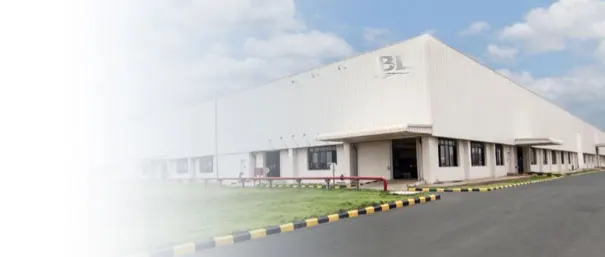ASTM 2507 Stainless Steel: Super Duplex Stainless Steel for High-Performance Corrosion Resistance
ASTM 2507 (UNS S32750) is a super duplex stainless steel renowned for its exceptional combination of high strength, superior corrosion resistance, and excellent pitting/crevice resistance. With a balanced 25% chromium, 7% nickel, and 4% molybdenum composition, this grade outperforms conventional austenitic and duplex stainless steels in aggressive environments. This article explores its chemical properties, mechanical characteristics, manufacturing process, and industrial applications where ASTM 2507 delivers unmatched performance.
1. Core Chemical Composition (ASTM A240/A789 Standard)
| Element | Content Range | Function |
|---|---|---|
| Chromium (Cr) | 24.00 – 26.00% | Forms protective Cr₂O₃ passive layer; enhances oxidation and corrosion resistance |
| Nickel (Ni) | 6.00 – 8.00% | Stabilizes austenitic phase; improves toughness and low-temperature performance |
| Molybdenum (Mo) | 3.00 – 5.00% | Boosts pitting/crevice corrosion resistance (PREN > 40); critical for chloride environments |
| Nitrogen (N) | 0.24 – 0.32% | Strengthens austenitic phase; improves localized corrosion resistance and weldability |
| Carbon (C) | ≤ 0.030% | Minimized to prevent carbide precipitation and intergranular corrosion |
| Manganese (Mn) | ≤ 1.20% | Assists in deoxidation; enhances hot workability |
| Silicon (Si) | ≤ 0.80% | Improves oxidation resistance at elevated temperatures |
| Copper (Cu) | ≤ 0.50% | Enhances resistance to sulfuric acid corrosion |
2. Key Mechanical Properties (Room Temperature)
- Tensile Strength (σb): ≥ 800 MPa (minimum, solution annealed condition)
- Yield Strength (σ0.2): ≥ 550 MPa (nearly double that of 316L)
- Elongation (δ): ≥ 25% (excellent ductility for a duplex grade)
- Hardness (HB): ≤ 310 (Brinell hardness; higher than austenitic grades)
- Impact Toughness (CVN): ≥ 100 J at -46°C (superior low-temperature toughness)
- Pitting Resistance Equivalent (PREN): ≥ 40 (calculated as %Cr + 3.3×%Mo + 16×%N)
3. Manufacturing Process & Heat Treatment
- Melting: Triple-melted process (EAF + AOD + VOD) ensures ultra-low carbon and impurity levels, critical for corrosion resistance in aggressive media.
- Hot Working: Forged or hot-rolled at 1100-1200°C, followed by rapid water quenching to maintain phase balance (50:50 austenite-ferrite ratio).
- Solution Annealing: Heat treated at 1080-1120°C for 1-2 hours, then water quenched to dissolve intermetallic phases and restore corrosion resistance.
- Cold Working: Limited to ≤10% deformation to avoid harmful phase transformations; intermediate annealing required for heavy forming.
- Surface Finishing: Pickling in nitric-hydrofluoric acid blend to remove oxide scale; electropolishing optional for critical applications (e.g., pharmaceutical equipment).
4. Corrosion Resistance Performance
| Corrosion Type | Performance | Comparative Advantage |
|---|---|---|
| Pitting Corrosion | Critical Pitting Temperature (CPT) > 80°C | Superior to 316L (CPT ~25°C) and 2205 (CPT ~60°C) |
| Crevice Corrosion | Critical Crevice Temperature (CCT) > 50°C | Outperforms 2205 by 15-20°C in chloride solutions |
| Stress Corrosion Cracking (SCC) | Resistant up to 150°C in chloride environments | Far exceeds 304/316 limits (~60°C) |
| Uniform Corrosion | < 0.1 mm/year in 10% H₂SO₄ at 60°C | Comparable to high-alloy austenitic grades |
| Galvanic Corrosion | Noble potential (E₀ ≈ +0.15V vs SHE) | Minimizes risk when coupled with carbon steel |
5. Primary Industrial Applications
Oil & Gas Industry
Subsea pipelines, umbilical tubes, and topside process equipment in offshore platforms. Resists CO₂/H₂S corrosion and chloride-induced stress cracking in sour gas environments (NACE MR0175/ISO 15156 compliant).
Chemical Processing
Reactors, heat exchangers, and scrubbers handling acetic acid, phosphoric acid, and chloride-contaminated media. Ideal for PTA (purified terephthalic acid) and titanium dioxide production.
Desalination Plants
Seawater reverse osmosis (SWRO) pressure vessels, pumps, and high-pressure piping. Withstands 40,000+ ppm chloride at elevated temperatures (up to 40°C).
Pulp & Paper
Bleach plant equipment, digesters, and white liquor tanks. Resists sulfur compounds and chloride bleaching agents at high temperatures (up to 90°C).
Flue Gas Desulfurization (FGD)
Absorber towers, ducting, and slurry pipelines in coal-fired power plants. Handles sulfuric acid condensates and chloride-rich scrubber environments.
Marine & Shipbuilding
Ballast water systems, propeller shafts, and seawater cooling systems. Certified by DNV, ABS, and Lloyd’s Register for marine applications.
6. Comparison with Other Duplex Grades
| Grade | PREN Value | Strength (MPa) | Key Applications |
|---|---|---|---|
| ASTM 2205 (S32205) | 33-38 | 620-880 | General duplex applications; moderate chloride environments |
| ASTM 2507 (S32750) | 40-45 | 730-930 | Aggressive chloride media; high-temperature sour gas |
| ASTM 255 (S32550) | 36-40 | 690-860 | Moderate corrosion + high wear resistance |
| ASTM 32760 (S32760) | 40-45 | 700-900 | Super duplex with enhanced PREn; alternative to 2507 |
7. Fabrication & Welding Guidelines
- Machining: Use carbide tools (K10-K20 grade) with slow speeds (60-90 m/min) and heavy feeds to avoid work hardening. Coolant is mandatory to prevent overheating.
- Welding: Recommended filler: ER2594 (for autogenous welding) or ER2553 (for dissimilar joints). Preheat not required; interpass temperature ≤150°C. Post-weld annealing at 1100°C if full corrosion resistance is critical.
- Forming: Minimum bend radius = 3×thickness (transverse) or 5×thickness (longitudinal). Avoid forming below 10°C to prevent cracking.
- Heat Treatment: Never exceed 1150°C or hold below 950°C to avoid sigma phase precipitation. Rapid cooling is essential.
- Surface Protection: Store in dry, ventilated areas. Remove weld slag immediately with stainless steel brushes to prevent pitting initiation.
8. Request a Super Duplex Stainless Steel Quote
For customized ASTM 2507 stainless steel products—including sheets, plates, pipes, fittings, or forgings—contact our technical team. We provide mill-certified materials with full traceability, precision cutting, and surface finishing options to meet your project specifications.


